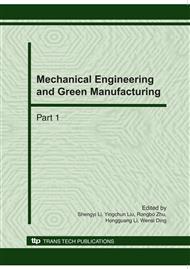p.1211
p.1217
p.1223
p.1228
p.1233
p.1238
p.1243
p.1248
p.1253
Fault Diagnosis Method Based on Supervised Incremental Local Tangent Space Alignment and SVM
Abstract:
To enhance the effect of fault diagnosis, a new fualt diagnosis method based on supervised incremental local tangent space alignment (SILTSA) and support vector machine (SVM) is proposed. The supervised learning approach is embedded into the incremental local tangent space alignment algorithm, to realize fault feature extraction and new data processing for equipment fault signal, and then correctly classify the faults by non-linear support vector machines. The experiment result for roller bearing fault diagnosis shows that SILTSA-SVM method has better diagnosis effect to related methods
Info:
Periodical:
Pages:
1233-1237
Citation:
Online since:
October 2010
Authors:
Price:
Сopyright:
© 2010 Trans Tech Publications Ltd. All Rights Reserved
Share:
Citation:


